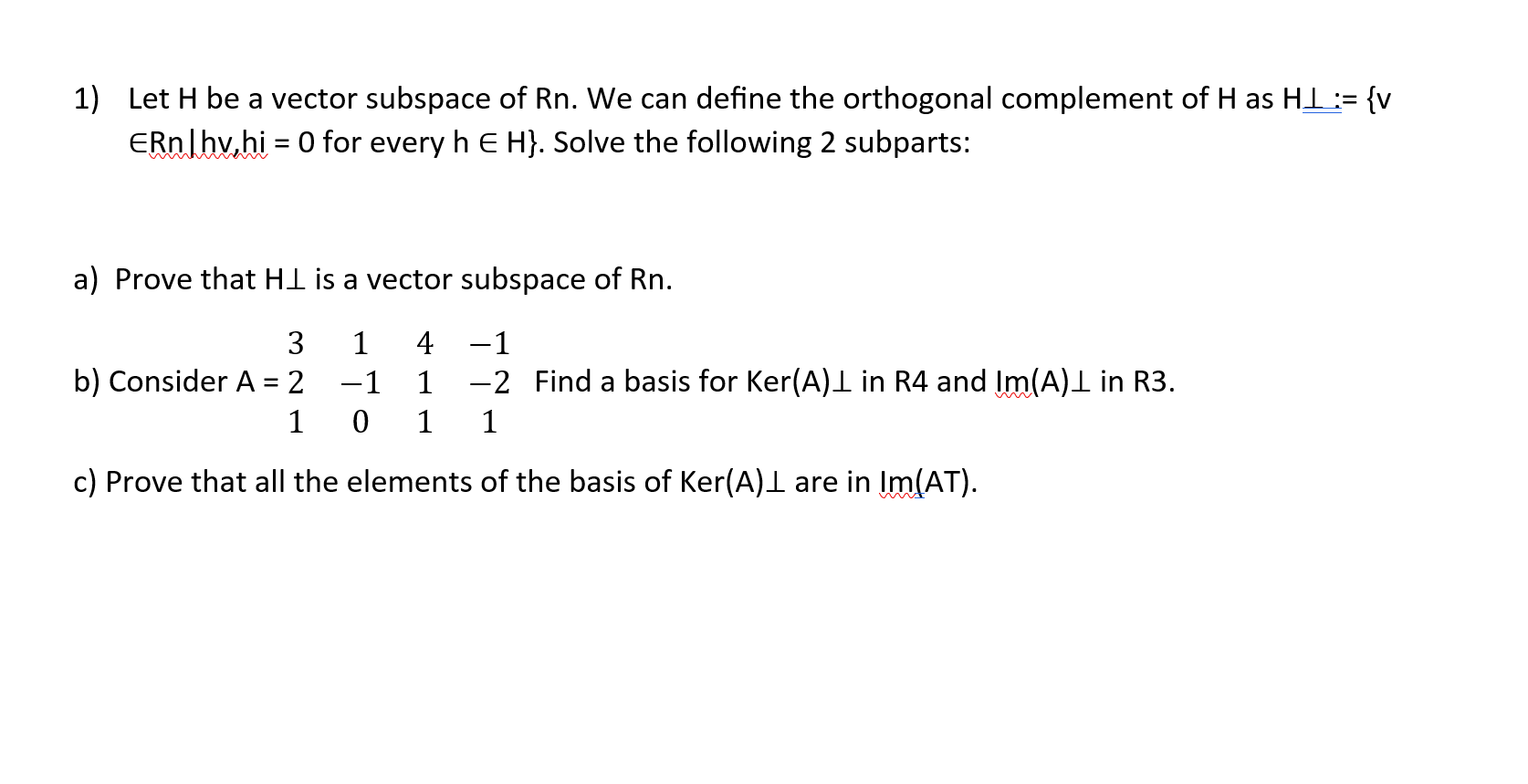

In general, any subset of the real coordinate space R n that is defined by a system of homogeneous linear equations will yield a subspace. Then c p = ( cp 1, cp 2) since p 1 = p 2, then cp 1 = cp 2, so c p is an element of W. Let p = ( p 1, p 2) be an element of W, that is, a point in the plane such that p 1 = p 2, and let c be a scalar in R.Then p + q = ( p 1+ q 1, p 2+ q 2) since p 1 = p 2 and q 1 = q 2, then p 1 + q 1 = p 2 + q 2, so p + q is an element of W. Let p = ( p 1, p 2) and q = ( q 1, q 2) be elements of W, that is, points in the plane such that p 1 = p 2 and q 1 = q 2.Take W to be the set of points ( x, y) of R 2 such that x = y. Let the field be R again, but now let the vector space V be the Cartesian plane R 2. Given u in W and a scalar c in R, if u = ( u 1, u 2, 0) again, then c u = ( cu 1, cu 2, c0) = ( cu 1, cu 2,0).Given u and v in W, then they can be expressed as u = ( u 1, u 2, 0) and v = ( v 1, v 2, 0).Take W to be the set of all vectors in V whose last component is 0. Let the field K be the set R of real numbers, and let the vector space V be the real coordinate space R 3. These are called the trivial subspaces of the vector space.

Īs a corollary, all vector spaces are equipped with at least two (possibly different) linear subspaces: the zero vector space consisting of the zero vector alone and the entire vector space itself. Equivalently, a nonempty subset W is a subspace of V if, whenever w 1, w 2 are elements of W and α, β are elements of K, it follows that αw 1 + βw 2 is in W. If V is a vector space over a field K and if W is a subset of V, then W is a linear subspace of V if under the operations of V, W is a vector space over K.

6.6 Basis for the sum and intersection of two subspaces.5 Operations and relations on subspaces.


 0 kommentar(er)
0 kommentar(er)
